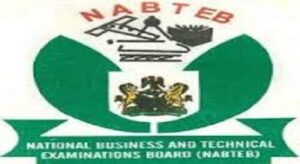NABTEB Metal Work Syllabus And Hot Topics To Read For NABTEB: If you have been wondering how to get NABTEB Syllabus Online Plus hot topics you are to focus on in Metal Work then Guide is for you.
Recommended
The aim of the National Business and Technical Examinations Board (NABTEB) Metal Work Syllabus is to ensure that you are well prepared for the exam. You may also click here for how to Pass 2022 NABTEB once and for all without Expo.
NABTEB METAL WORK SYLLABUS
OBJ: There will be forty (40) multiple-choice questions. Candidates will be required to answer all in 40 minutes. This section carries forty (40) marks.
ESSAY: This will be a written paper of six questions. Candidates are to answer five questions in 2 hours. This Section carries sixty (60) marks.
PRACTICAL: This will comprise of two (2) Practical tests (A & B). Test A ”“ Fitting Work and Test B ”“ Machining. There will be compulsory Questions, one each from Fitting and Machining.
The practical work is to be done for a total of 100 marks in six (6) hours; the paper is to be released to the candidates one (1) week before the examination date.
Recommended: Nabteb syllabus for all subjects
GENERAL METAL WORK
| S/NO |
TOPICS/ OBJECTIVES |
CONTENTS |
ACTIVITIES/REMARKS |
|
1. |
<divWorkshop Safety Rules and Practice
|
1. Sources of hazards in the workshop and how to prevent them e.g.
|
|
|
S/NO |
TOPICS/ OBJECTIVES |
CONTENTS |
ACTIVITIES/REMARKS |
|
workers in the workshop.
|
|||
|
2. |
Ferrous and Non- Ferrous Metals Explain the meaning of physical properties of metals and outline manufacturer processes as related to ferrous and non- ferrous metals. |
|
|
| 3. |
Bench Work and Tools |
1. Physical properties and application of non- ferrous metals e.g. |
1. List and use of instruments applicable in metal workshop. |
|
S/NO |
TOPICS/ OBJECTIVES |
CONTENTS |
ACTIVITIES/REMARKS |
|
difference between ”˜line’ and ”˜end’ measurement and the use of measuring instrument in bench work.
|
copper, tin, zinc, aluminium and aluminium alloy brass (metal muntz, phosphorus, bronze and lead).
– limits of accuracy.
|
|
|
S/NO |
TOPICS/ OBJECTIVES |
CONTENTS |
ACTIVITIES/REMARKS |
|
various exercise with a piece of metal.
|
Uploaded to www.flashlearners.com | ||
|
4. |
Drills and Drilling
|
|
|
Uploaded to www.flashlearners.com
|
S/NO |
TOPICS/ OBJECTIVES |
CONTENTS |
ACTIVITIES/REMARKS |
|
drilling faults.
|
clearance. e. Excessive lip clearance. formulae: N = 1000S πd Πd 1000 S = Where
|
metals and other engineering materials.
|
|
|
5. |
Fastenings 1. State and explain the meaning of tapping size or tapping drill, its functions, precaution to be taken when tapping on bench and estimate its |
of the following:
|
|
Uploaded to www.flashlearners.com
|
S/NO |
TOPICS/ OBJECTIVES |
CONTENTS |
ACTIVITIES/REMARKS |
|
value.
|
(BA) thread.
|
Uploaded to www.flashlearners.com | |
|
6. |
Tolerance and Fit
|
|
Do some calculation on tolerance and fit based on given specifications. |
|
S/NO |
TOPICS/ OBJECTIVES |
CONTENTS |
ACTIVITIES/REMARKS |
|
7. |
Production
|
|
|
|
8. |
Lathe and Lathe Work
|
|
|
Uploaded to www.flashlearners.com
|
S/NO |
TOPICS/ OBJECTIVES |
CONTENTS |
ACTIVITIES/REMARKS |
|
types of cutting fluids used for lathe turning operations, their composition, their purposes and outline safety precautions involved. 3. Sketch, explain and describe common tools, functions of tools, angle rake, clearance and state the values for different metals to be machined. |
values. lathe accessories e.g. Catch or driving plate, face plate, lathe dog, or carrier, lathe centre, fixed and traveling steadies. |
||
|
9. |
Heat Treatment
|
b. Brass etc. |
|
|
S/NO |
TOPICS/ OBJECTIVES |
CONTENTS |
ACTIVITIES/REMARKS |
|
brass and aluminium for various purposes. |
|||
|
10. |
Forging Processes
|
|
Produce simple engineering components based on given specification. |
|
11. |
Gas and Arc Welding operate and explain the principles and application of gas and metal arc welding |
|
|
|
S/NO |
TOPICS/ OBJECTIVES |
CONTENTS |
ACTIVITIES/REMARKS |
|
equipment.
|
observed.
|
|
|
S/NO |
TOPICS/ OBJECTIVES |
CONTENTS |
ACTIVITIES/REMARKS |
|
formulae and produce simple components by using compound slide. 6. Set up rough and turned stock in 3-jaw chuk, carry out chuk work and state precautions to be observed when turning between centres. |
Taper ratio = d2 ”“ d1 L ORTanQ = dz”“di 22 Where |
www.flashlearners.com |
